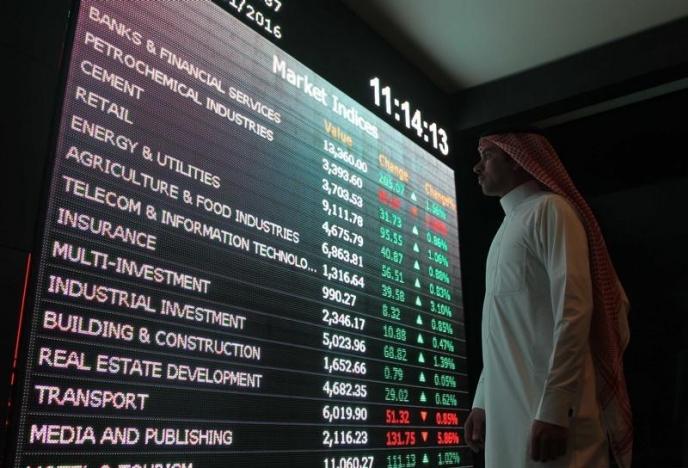Riyadh – Saudi Arabia’s stock market rose 100 points on Wednesday on the eve of the government’s release of its 2017 budget.
The Saudi stock index added 1.5 percent to 7,191 points, nearing technical resistance on this year’s peak of 7,235 points, hit earlier this month. Trading volume rose to its highest in over a week.
Saudi Electricity jumped 8.7 percent after the government said in the budget it would raise domestic fuel and electricity prices by unspecified margins later this year.
Tadawul All-Share Index (TASI) climbed 0.4 percent, though trading volume shrank to its lowest level in two months as many investors became cautious before the budget announcement.
At the close in Saudi Arabia, the Tadawul All Share added 1.46%.
The best performers of the session on the Tadawul All Share were Arabian Shield Coop Insurance Co (SE:8070), which rose 9.86% or 3.50 points to trade at 39.00 at the close.
Meanwhile, Tihama Advertising & Public Relations (SE4070) added 9.73% or 2.50 points to end at 28.20 and Saudi Arabian Cooperative Insurance (SE8100) was up 9.20% or 1.60 points to 19.00 in late trade.
This change is due to the new budget which is expected to have $237.3 billion in government’s spending, a 6% increase of the 2016 actual spending.
Meanwhile, Saudi Arabian Monetary Agency (SAMA) announced that new coins and banknotes will be available at all branches of SAMA from Dec. 26, adding that it began sending the new banknotes to local banks.
Al-Rajhi Capital issued a report on the 2017 budget entitled: “Saudi Arabia Budget 2017: Overview Expansionary policy to drive growth.”
The report said: “After two years of back to back spending decline due to lower oil prices, the spending for 2017 is budgeted to rise 8% to SAR890 billion vs. actual spending in 2016. The expansionary policy will likely boost growth, with 2.0% GDP growth in 2017 vs. 1.4% in 2016, and ease liquidity further, thus partially mitigating impact of a higher interest rate environment.”
Rajhi also pointed out that despite higher spending, budget deficit for 2017 is expected at SAR198 billion, 7.7% of GDP, as spending increase is primarily driven by higher oil revenue projection.
The report highlighted that the 2017 budget is in-line with the objectives of the National Transformation Program (NTP), adding that: “The key proposals of budget 2017 i.e. progressively lower budget deficit achieving breakeven by 2020, a debt ceiling, continuing energy price reforms, enhanced disclosures and transparency, likely labor market reforms and other new initiatives have all the markings of being in-line with the objectives of the flagship NTP and Vision 2030 plans of the Kingdom.”
Rajhi team concluded that the participation of the private sector gets a boost with higher 2017 NTP budget. They explained: “Private sector’s contribution should pick pace in 2017 and the implementation should transition from semi-conceptual stage to actual plans on the ground.”
It is worth mentioning that Saudi Arabia has become the destination of various international investments, especially after oil prices fell below $50 and Vision 2030 was issued for the post-oil era.
